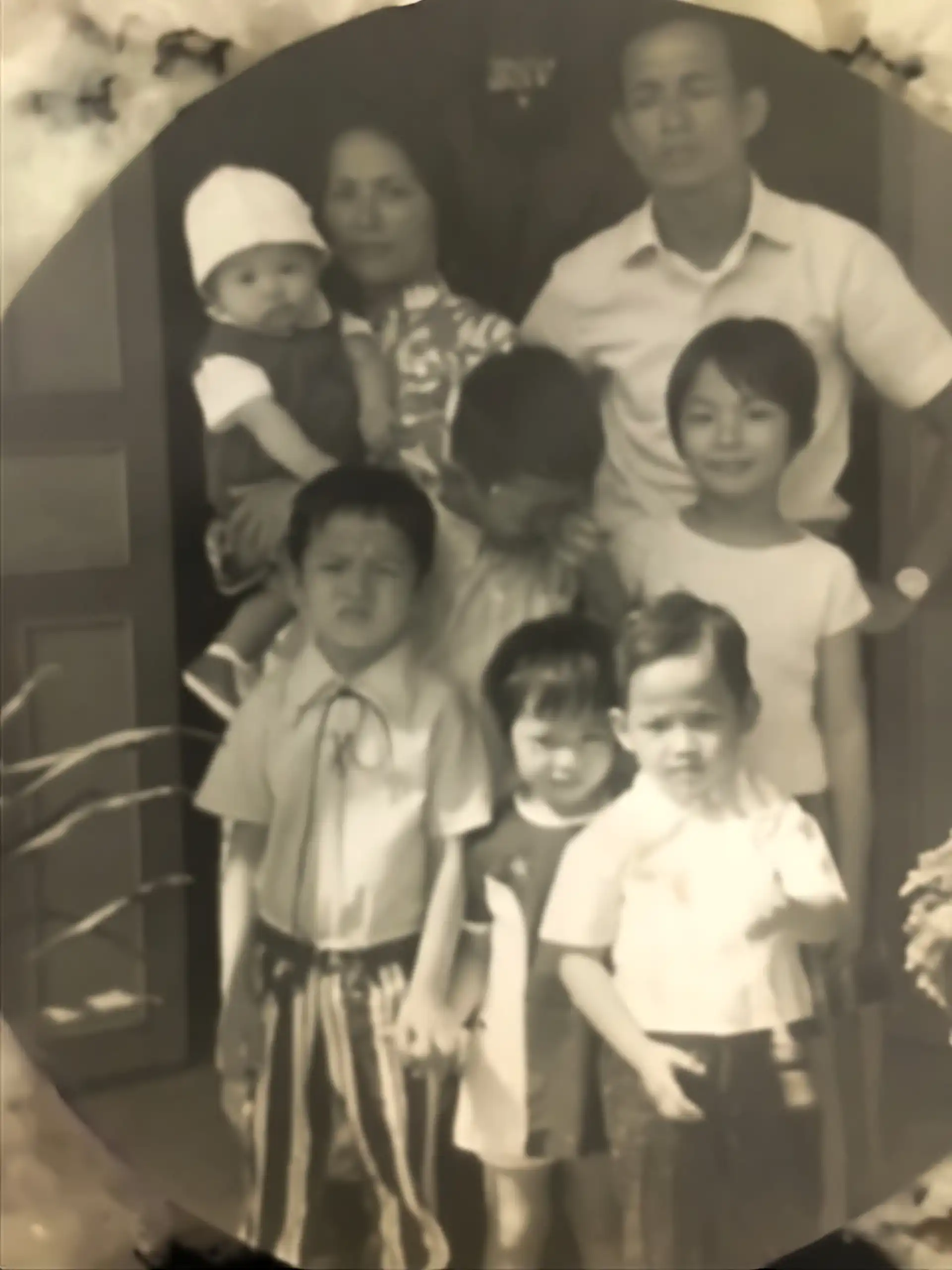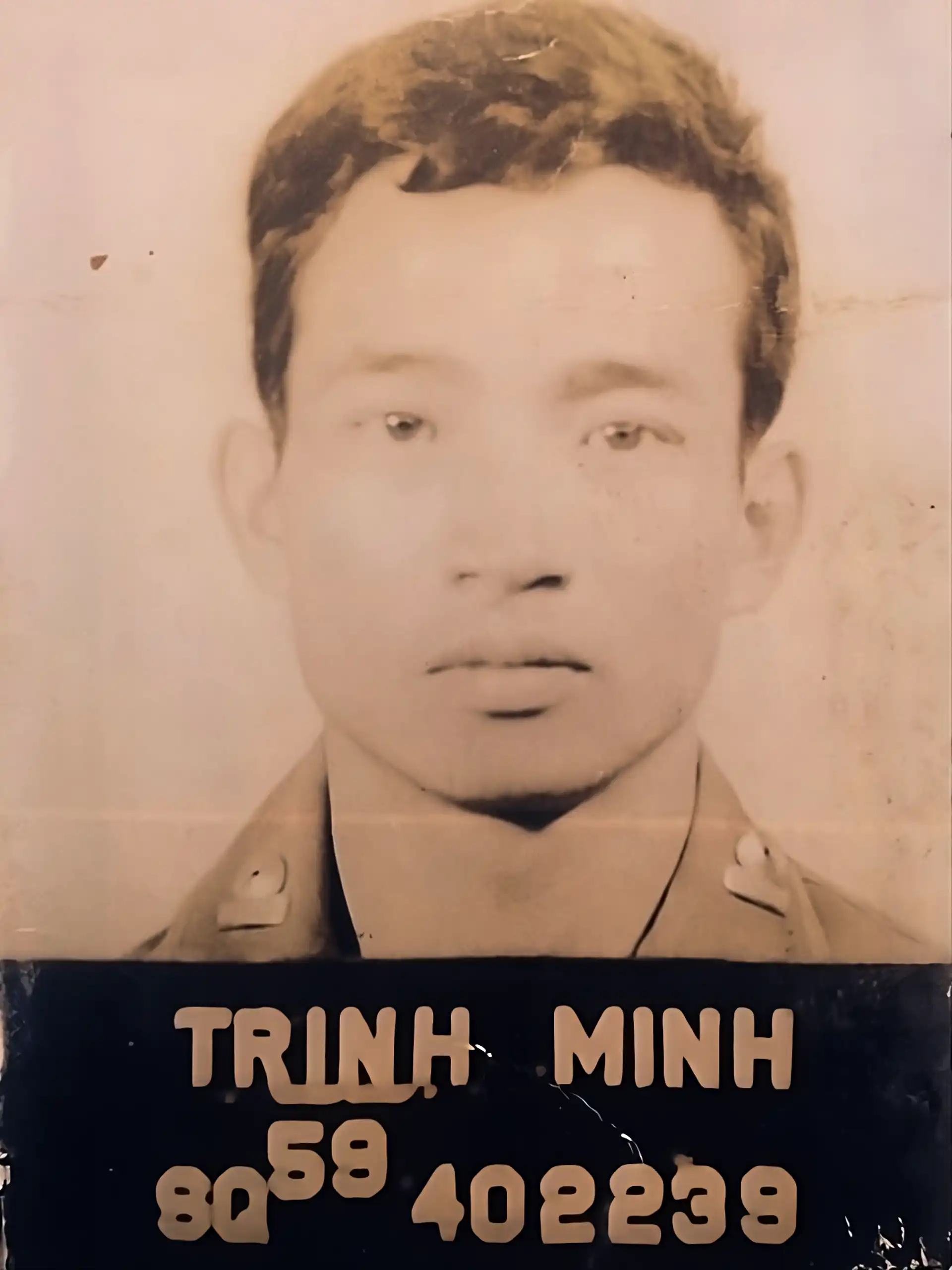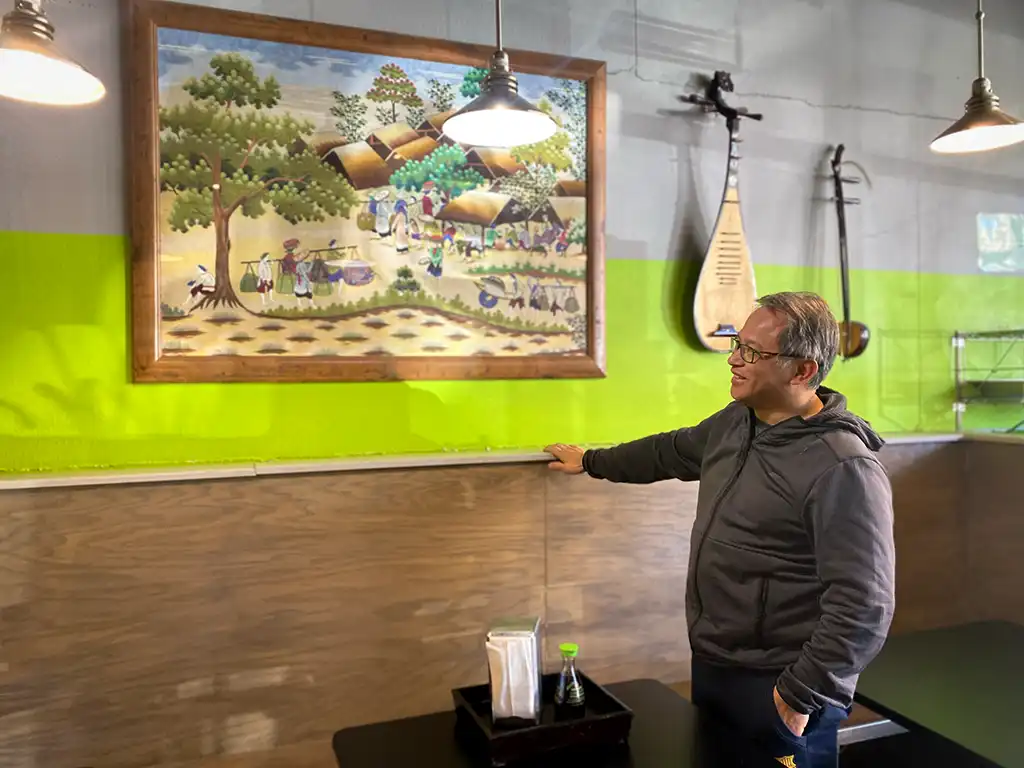Viet Bites and the Future of North Texas Cuisine

By Rob Curran
James Trinh is a salt-of-the-earth type of man, and I can almost hear him laughing at being dubbed a North Texas food hero.
Bear with me.
Trinh comes from a long line of Vietnamese heroes, and anyone who, like me, has lined out on an indoor soccer field against his eight-year-old son can confirm that this streak of fearlessness goes on through the generations. Trinh has also taken bold risks with his food at the Viet Bites restaurant. When it first opened 10 years ago at a building Trinh bought on Elm Street, he was among the first South-Asian-born restaurateurs in town. There was a question as to whether this town was ready for the flavors.
For decades, the Dallas-Fort Worth metropolitan area has had a reputation as Austin’s square big sibling, all glossy blouses and wing-tips. “Every Dallas suburb feels like a bunch of cul-de-sacs joined by a five-lane highway,” as the comedian Stavros Halkias said in a recent Dallas stand-up performance.
“I’m spending 30 minutes in an Uber to get to a Nobu in a mall?”
Even the name “Metroplex” exudes a certain faceless blandeur. Could anything superlative thrive in the “Mid Cities”?
In a culinary sense, the Denton that Trinh moved to was much like the rest of the region -- an unbroken chain of franchise restaurants, like a giant DNA string where the proteins are fried-chicken and pancake places.
But relentless North Texan economic growth and relatively affordable housing has finally drawn people like James Trinh, who was born in Vietnam and grew up in New Orleans, to the region from all over the U.S. and from all over the world. One Israeli North Texan put it to me this way: “Texas is easy…Boston, you’ve got to clear the snow, the traffic is horrible, everything is expensive. It’s just easier to live here.” As a result of this influx, the unpredictable bubbling-over of the cultural and culinary melting pot that made New York City, Los Angeles and London such exciting places to be in the last 50 years is finally happening in North Texas.
Denton now has every conceivable flavor, including lemongrass, the one that James Trinh says is the heart of Vietnamese cooking. Lemongrass is that tangy je-ne-sais-quoi in the pho; it’s the zing in the pork in your banh mi.
When Trinh first opened Viet Bites, he served Vietnamese tacos. I loved the combination of Wonton dough and tangy lemongrass-flavored fillings. Trinh dreamed these up himself, but may have been influenced by his aunt Mykha Trinh, a woman who had helped pioneer the Mexican-Vietnamese fusion in Chicago, and was living with him in Denton at this time.
Trinh said his aunt was a kind of nomadic mentor, a culinary Mary Poppins. Despite her fame in the Chicago food scene – she was honored with an obituary in the Chicago Sun Times – she never stayed in one home long, and never held onto any of her money. She moved in with people, like Trinh, changed their lives with her cooking, grandmothering, and strong will. And, as soon as she became the most important person in their lives, disappeared – off to the next mentee. In addition to her work on fusion, Mykha Trinh was famed in Chicago for what she called “Grandma Noodles,” a broth containing pan-fried crunchy rice noodles and another ingredient that Trinh considers quintessentially Vietnamese – fish sauce.
Heroic Mothers of Vietnam
The story of James Trinh’s life and food is one of worlds colliding – East and West, War and Peace, lemongrass and cilantro. It’s also a story of heroic mothers and the bounteous legacy of flavors they bequeathed him.
Trinh was born in Quang Nam, a province where north and south meet. In 2019, Trinh returned to Vietnam for the first time since he left as an eight-year-old.
“My father for a while would never go back to Vietnam,” said Trinh, who expected his return to be more bittersweet and less hectic. “It was so different, so young and vibrant. I didn’t feel any prejudice against Americans or Vietnamese coming from America. “
There were vestiges of the old divisions. He found his hometown still divided between loyal supporters of Ho Chi Minh’s Communist revolution on one side of the river and American-leaning families who had supported the dissidents on the other.
Mainly, however Trinh was shocked at how Vietnamese had shed their past, how they had embraced the upheaval of the 21st century global economy and similarly sweeping changes in flavors. So many hip cafes, couture clothing stores, and Ray Ban stalls line the cobbled streets of Hanoi that the visitor might be in Bordeaux or Santa Fe, just with narrower streets, fewer stop signs and more scooters.
South of Hanoi, the Quang Nam province is now a kind of Vietnamese Riviera, where Crazy Rich Asians (and expats) from all over the region come for sun and surf. Trinh joked that, after they left, the family home, which backed onto the beach in Nha Trang, was sold by his grandfather for “a couple of cows or something.” The land alone is now likely worth hundreds of thousands of dollars.
Trinh’s grandfather Trinh Ly was a Catholic priest who became close to Ho Chi Minh in the 1950s, in the southerly province of Lam Dong. At that time, Rene Coty’s France was in peace negotiations with Ho, negotiations that would lead to Vietnamese independence. At one stage, Trinh says, the French army in Vietnam invited Ho to a clandestine meeting. At the last moment, Ho asked Trinh’s paternal grandfather to attend in his place. “It was a trap,” Trinh said. When the priest arrived, the family was told, he was seized by French guards. He was eventually put to death by firing squad.

If that were not bad enough, the priest’s widow, the mother of his children, James’s paternal grandmother, Nguyen Thi Hai, was identified by the French as a dissident. When a French official was killed in the Lang Dom province, James’s grandmother was rounded up with 18 other alleged subversives. She was placed in a sack with heavy rocks and dumped in the river. The name Nguyen Thi Hai means Heroic Mother of Vietnam.
Trinh visited a shrine in Lam Dong for the fallen heroes of the Ho Chi Minh times. On a wall of roughly 100 plaques, the first name was his grandfather’s and the fifth was his grandmother’s.
Later, Trinh’s mother almost perished in the U.S.-Vietnam conflict. Recently, I saw Tim O’Brien, the author of the famous U.S. novel about the Vietnam War, The Things They Carried, talk about his experience in the infantry in the early 1970s. Almost all the comrades he lost, and there were many, were blown up by mines. The very earth, as he described it, was the enemy. He described three different types of mines. One sprang up in the air and detonated there, the better to annihilate a person’s torso. Another was improvised ordinance designed to blow up tanks and buildings so that one person stepping on it could cause a blast large enough to kill a dozen. There were the toe-poppers. What was dangerous for soldiers on the lookout was even more treacherous for Vietnamese kids running through the fields. Those mines have been blowing up people in Quang Nam ever since.
Fortunately, Trinh’s aunt, Mykha, the woman who would go on to be such a force in the Chicago food scene, had a contact in the U.S. army. Trinh’s father, a math professor and later an actuary, was known as a genius. He placed second in national mathematics competitions. He later gave James and his other sons a middle name after the only person who outscored him. But Mykha “was streetwise, quick. My dad was smart, but he wasn’t streetwise,” Trinh said.
The Fall of Saigon
During the fall of Saigon, in 1975, Mykha managed to evacuate 13 children, including her own four kids, the eight-year-old James Trinh and his cousin, Peter Cuong Franklin, who would become the first Michelin-starred chef in Vietnam when he returned to Saigon. Mykha bundled them onto one of the last helicopters leaving the city ahead of the Communist invasion with the help of Trinh’s father. Trinh remembers being taken aback by the gargantuan build of the GIs. He stared at them. Trinh still has flashbacks of the helicopter ride from Saigon to an imposing merchant ship off the coast, whenever he sees the spotlights shining down riverboat casinos in New Orleans, and whenever he tastes chocolate like that served from the military rations.
Mykha never forgot the children of Vietnam. Later, she would spend most of her Chicago money on projects for street kids.
More astounding still was the story of Trinh’s mother. She had remained in Quang Nam with his youngest brother, George. It was the kind of horrific calculation that families have to make in times of war. There was only so much room on that helicopter. George needed his mother. So Trinh’s father had to go, and his mother had no escape from the scorched-earth march of the Vietcong.
Against all the odds, Trinh’s mother made her own way to Saigon and made her own contacts in the U.S. Army. A GI took pity on her. Her nipples were cracked and she was completely emaciated from the effort of trying to feed her son with her malnourished body. Somehow, they both got out of Saigon alive.
For two months, James Trinh was running around a vast refugee camp in Guam, chasing footballs, until one day he ran into a crowd around an adult selling a radio. Trinh recognized the adult as his uncle. When he approached, he was delivered the happiest surprise of his life.
“’What are you doing here?’” he asked his mother’s brother.
“You know your mother is here, too?”
Coming to America
James Trinh’s mother is not a professional chef, like his aunt or his sister (who runs a Vietnamese restaurant in Atlanta that dubs itself a “global grub collective”) or his cousin, Franklin. But Trinh discovered food through his mother. In a big family, he found that the best way to spend time with his mother was to help her with the bun bao dumplings she made and sold in markets in Minnesota, where the family lived for a time.
“I woke up Friday and Saturday at 2 am to do the dough, then she’d take it out and steam it.“
When Trinh thinks of his home region, Quang Nam, he thinks of his mother’s version of the Mi Quan noodle dish, a broth with yellow noodles, peanuts, and pork. He cannot rate the meal as good or bad. His mother’s cooking is inculcated in him.
That’s why Trinh laughs when the restaurant receives Yelp reviews knocking its authenticity.
It’s one thing hearing that he omitted some key ingredient from a Vietnamese visitor. There’s only so much Trinh can afford to bring back from his regular visits to the Carrollton Asian markets, so he’ll improvise on an ingredient or two. But Trinh, who is the all-time chef at Viet Bites, understands something about Vietnamese cooking that these White, Anglo food snobs will never understand. Vietnamese cuisine has always been about improvisation. When he returned to his homeland in 2019, the classic recipes had changed utterly. And what about those classic recipes: the Banh Mi is made with a baguette recipe cribbed from the cuisine of the French colonizers. Even Pho, the beloved brothy soup, is an adaptation of pot-au-feu – “pot on the fire.” The genius of Vietnamese culture is not adherence to ancient ways; it’s the people’s ability to adapt, to forge something beautiful from the fires of history; it’s what Trinh calls “ingenuity.”
“What makes Vietnam great is we’re not closed-minded,we’re going to take whatever’s out there and make it Vietnamese,” he said.
After more than a decade working white-collar gigs for major Houston oil-and-gas company Apache, Trinh decided to pursue his passion. When he opened the first Viet Bites location on Elm street in 2012, he and his wife worked 16-hour days. The plan had always been to build something ‘Chipotlesque,” Trinh said. “At that time, Asian fast casual was the hottest trend.”
At the Elm location, Trinh realized that the menu presentation was not there yet for a grab-and-go approach. I often went there on a Friday evening for a full-service sitdown meal.
“’How am I supposed to order?” was the main challenge for giving the Chipotle feel to food that was less familiar to Americans than burritos, Trinh decided. Plus, the ownership of the building on Elm Street was a much bigger headache than he’d anticipated.

Lemongrass & Fish Sauce
On Fry Street, which Trinh considers primarily a Pho joint, he used a color-coded, five-step ensuring people knew how to customize a soup using protein, vegetables and extra. There’s also a sign that says “how you spose to order?” Part of the joys of Vietnam is the offhand fashion in which food is often served. Sitdown restaurants are an option, but the bet pho is often served from a makeshift stand on the street. Bia Hoi bars are beer-first street-side institutions that people have come to love for the tapas-style mini dishes.
“We didn’t want a traditional Vietnamese sit-down with table service, where the restaurant’s open six, seven days a week and you’re working 14-16 hours a day,” said Trinh. “I’ve seen the way that breaks down the family.”
Keeping the place open through the pandemic was a challenge, of course. Trinh said his loyal lieutenant, “Mr. Robert,” was key. This man lived a tenuous existence of substance abuse and homelessness before Trinh took a chance on him. Now the two depend on one another.
I’ll confess that I slept on Viet Bites once it moved to the campus area. Big mistake. During a recent visit, I was blown away by the combination of spice and leafy freshness of the pho with pork. The banh mi – which I ordered with the classic aioli sauce – was also sublime, in a new perfectly crisp. I will be back soon.
Down the block from Viet Bites is another growing food business owned by a Vietnamese immigrant, Zalat Pizza.
Trinh’s favorite dish is stewed braised pork in fish sauce, which he serves with eggs and caramelized sugar. He’s played with versions of it on the specials menu at Viet Bites.
On the way back to the hotel from the Tim O’Brien presentation, I took an Uber driven by an Ethiopian man. He told me that he feels fortunate to have been born and raised in a war-ravaged nation. It gave him an understanding of the stakes that matter in life – namely, survival. The man told me that none of life’s quotidian travails – traffic, taxes, long hours – bother him as much as they appear to bother those born in affluence in the U.S.
It’s a philosophy that James Trinh embraces. In a life that has taken him the length and breadth of Asia, the length and breadth of the U.S., through survival to almost every run of the economic ladder, he has held onto the thing that gives him joy: the “citrussy” piquancy of lemongrass mixed with the layered mysteries of fish sauce. This flavor is there in his Pho; it’s there in his memories of prewar life in Vietnam; the flavor endures through the traumas of war to memories of life in Minnesota and New Orleans; and it’s there in memories of his 2019 visit to vibrant Saigon.
The epic Trinh survival story has one final, poetic twist. George, the brother whose breastfeeding almost killed Trinh’s mother, now looks after his mother, and makes sure she is fed.

